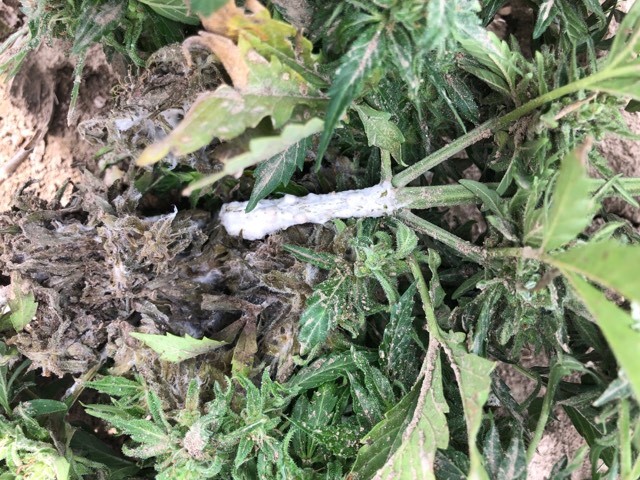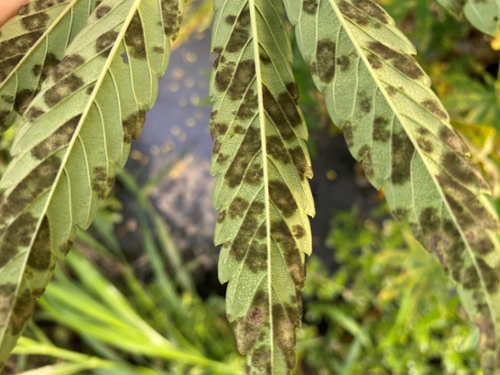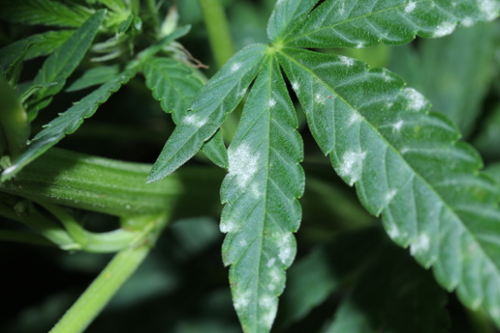Historically, the fungal pathogens gray mold (Botrytis cinerea) and white mold (Sclerotinia sclerotiorum) have been reported to infect and impact hemp production. In Indiana, white mold, in particular, is expected to be a major disease north of highway 70, particularly when soybeans are grown in adjacent locales, or in rotation with hemp. Hemp is also prone to numerous fungal and bacterial leaf spots, viruses, and Pythium root rot and blight during establishment. Southern blight was reported on hemp in Indiana (2019), as well as rust on the leaves of hemp (2019). Downy mildew has been found in Indiana.
Disease pressure will vary based on weather conditions, but with wet springs, we typically see several seedling diseases, including Pythium, Fusarium, and Rhizoctonia. Indoor producers also have to manage diseases on hemp. Powdery mildew is a common indoor disease that can be managed through adjustments in humidity, selecting disease resistant/tolerant cultivars, removing infected tissue, and the use of registered fungicides.
Disease management is challenging with no labeled synthetic fungicides for use in hemp. There are biopesticides available for use in Indiana and can be found here (PDF). Proper sanitation is crucial to prevent plant infection.



